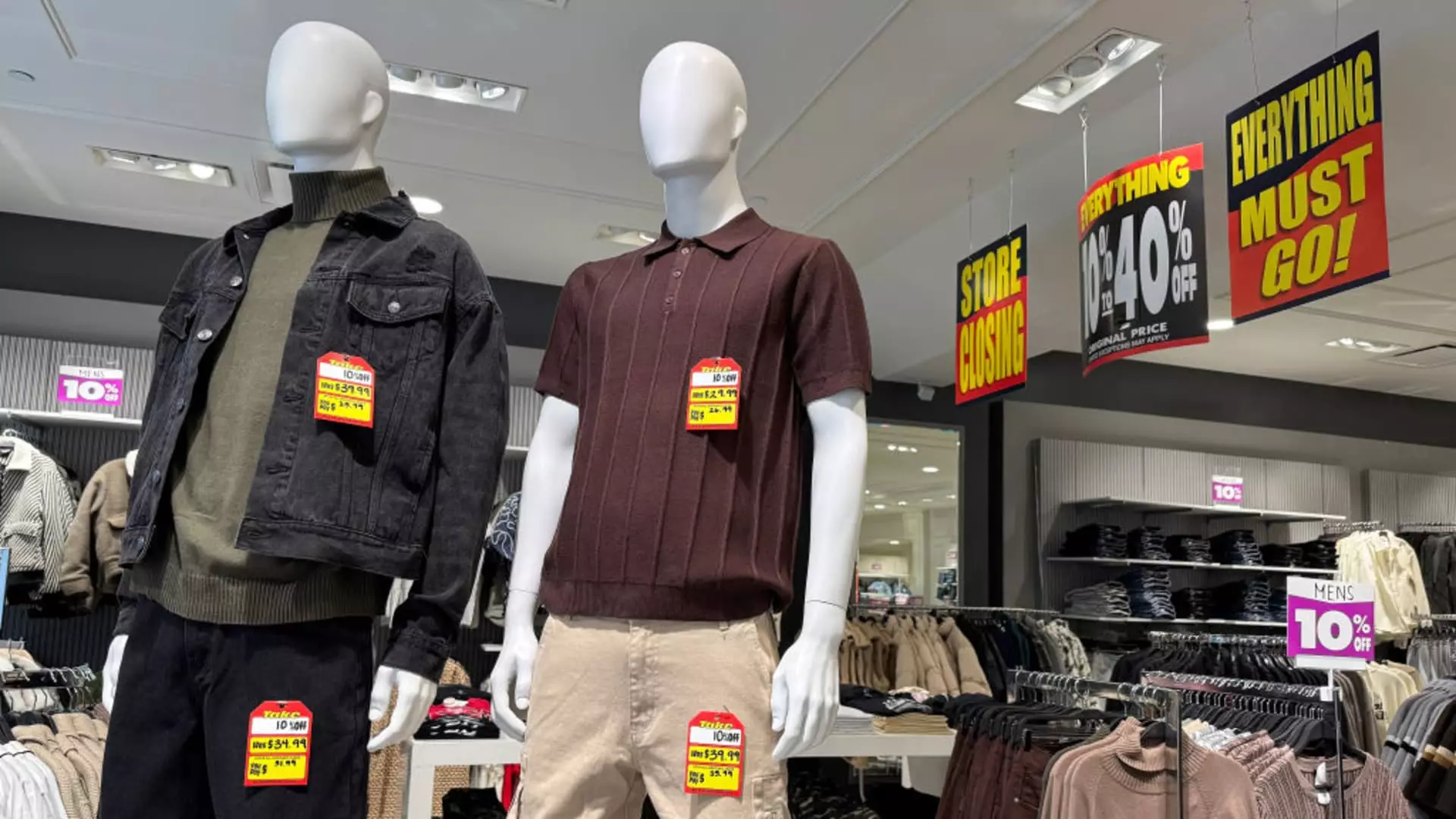The recent announcement of Forever 21’s second bankruptcy in just six years has sent shockwaves through the retail industry, illuminating the vulnerabilities that legacy brands face in an increasingly digital and competitive landscape. Once celebrated as a pioneer in fast fashion, Forever 21 has now entered a downward spiral, citing fierce competition from online behemoths like Shein and Temu as primary culprits in its demise. With a staggering $1.58 billion in debts and a seismic shift in consumer purchasing patterns, Forever 21’s struggles spotlight the precarious balance between rapid expansion and sustainable business practices.
Fast Fashion vs. Digital Giants
Forever 21’s co-chief restructuring officer, Stephen Coulombe, explicitly pointed to Shein and Temu’s adept exploitation of trade loopholes as a major disruptor to their operations. The de minimis exemption, which permits goods valued under $800 to enter the U.S. with no import duties, has allowed these upstart competitors to undercut the pricing strategies that traditional retailers have relied upon. Consequently, consumers have flocked to these online platforms, drawn by their unbelievable bargains and trend-driven selections.
While it is tempting to see this as merely a case of bad luck or ineffective strategy on Forever 21’s part, it raises more profound questions about the structural issues within American retail policy. The ongoing inability of the U.S. government to adapt to modern commerce realities speaks to a larger failure to safeguard domestic businesses from tax loopholes that disadvantage them. The conversation regarding import duties is not merely fiscal; it engages with the broader discourse on protecting American workers and businesses, resonating deeply with center-left ideals that advocate a fair marketplace.
The Fall of the Fast-Fashion Model
In an era where sustainability is becoming paramount for consumers, Forever 21’s full-throttle embrace of fast fashion appears out of step. With the brand once raking in billions in revenue, its decline serves as a cautionary tale. Fiscal reports reveal losses exceeding $400 million over the last three years, creating an unsustainable paradigm where quick turnarounds and ever-cheaper prices led to retail proliferation but underlying fragility.
The impact of COVID-19 accelerated these issues; with consumers losing disposable income, many turned instead towards brands that offered perceived value and quality—qualities that Forever 21 struggled to convey. As supply chains faltered and inflation soared, the gap between what Forever 21 could offer and what budget-conscious consumers sought widened significantly.
Attempts at Reformation: A Case Study in Futility
After its first bankruptcy filing, the brand saw a brief recovery, boosted by new capital and a significantly reduced storefront footprint. But even those mitigating strategies would not suffice. Nationwide, traditional retail struggles have reached a fevered pitch as e-commerce brands have redefined consumer engagement outside the brick-and-mortar framework. This reality reveals a failure of vision on the part of Forever 21 to adapt to a market that was moving beyond its outdated business model.
When the Sparc Group attempted to ally with Shein, the partnership hardly proved effective. In fact, the collaboration was a tacit acknowledgment of the shift in market theory; however, it was inadequate in addressing the deeper systemic issues. This reiterates that partnership alone cannot substitute for innovation or genuine evolution in business strategy, particularly when consumer preferences are at stake. Without tackling the core challenges, their strategy became just another instance of a tired brand attempting to cling to relevance amid chaos.
The Future of the Brand: Hope or Hype?
Despite being on the brink of liquidation in the U.S., Forever 21 may have some silver linings. Authentic Brands Group’s ownership means that while the retailer faces a bleak immediate future, the brand’s international aspects and digital presence remain intact. There’s talk of interest from potential buyers who may seek to revamp operations under a more modern paradigm, possibly aligning with evolving consumer expectations.
However, this brings a larger skepticism—can a rebranded Forever 21 successfully navigate this transition without losing its core identity? Market history suggests that attempts to revive legacy brands often result in uneven trajectories. If Ever 21’s revival is to succeed, its operators must fundamentally rethink their approach, moving away from swift fashion ephemerality toward more sustainable, consumer-centered models.
As Forever 21 dives deeper into the choppy waters of bankruptcy, one cannot help but wonder if the phrase “forever” will ring true in a modern retail context, or if it now serves as a tragic irony for a brand that may soon vanish as quickly as the trends it once championed.

